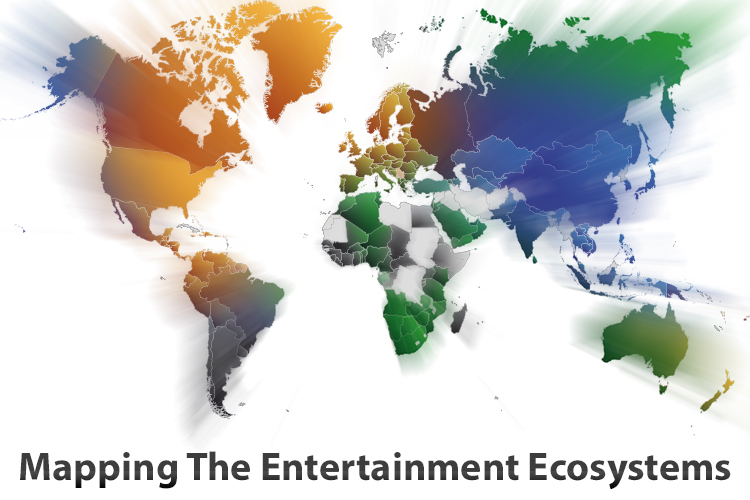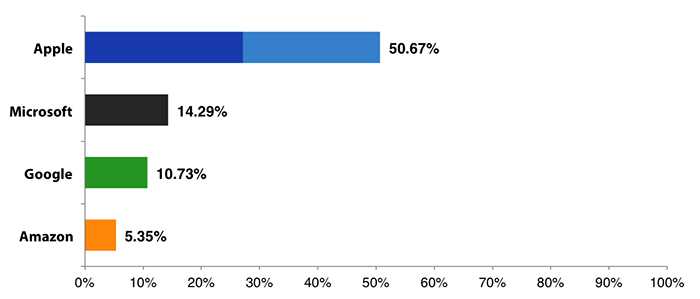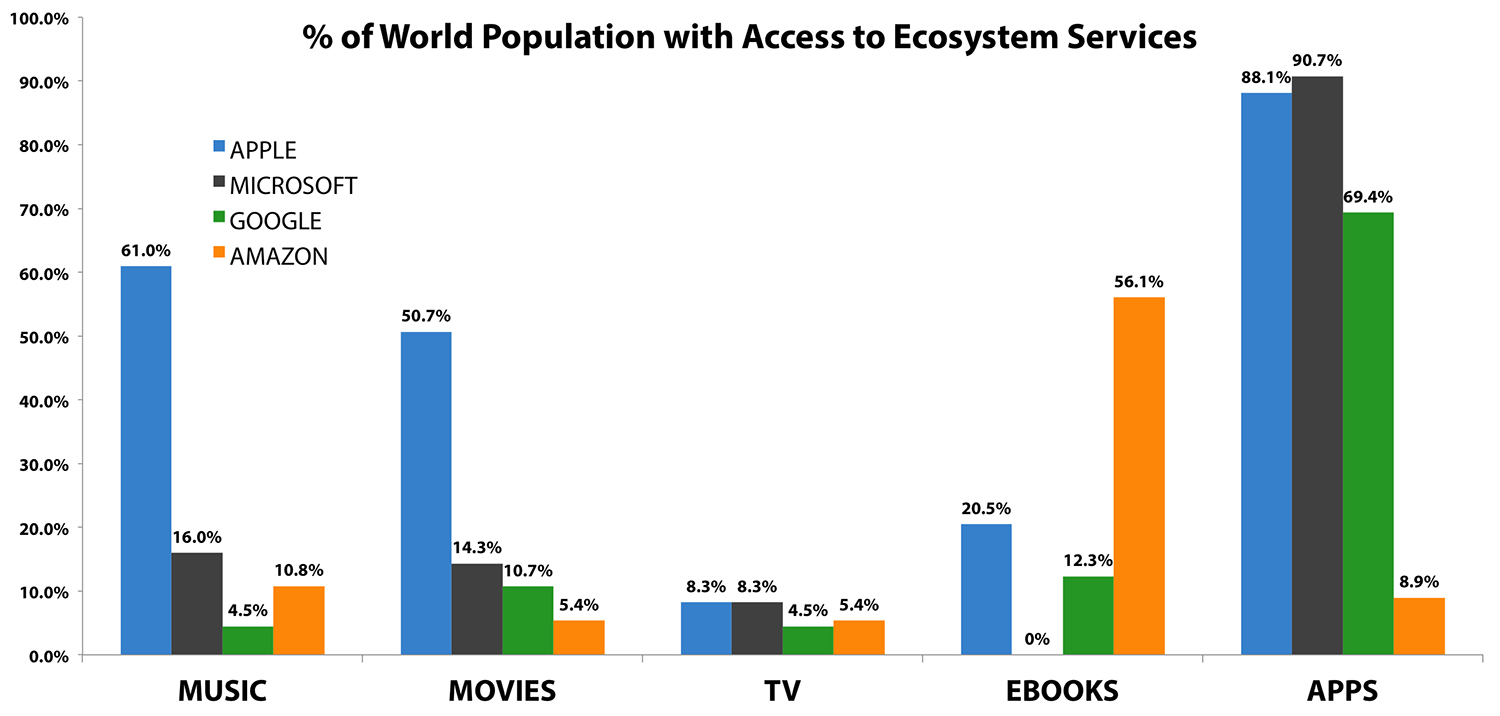In mid-October, we published a story on the entertainment ecosystems of Apple, Microsoft, Google and Amazon - looking at to what degree their music, movie, TV, eBook and app stores were available in international markets. Apple on the whole seemed to have the best average availability - slightly losing to Microsoft for the app stores and Amazon dominating everyone in the eBook store.
I’ve decided to briefly revisit the topic today because the original post garnered quite a lot of discussion and feedback and because of two “events” that have since happened. Firstly, Apple yesterday announced an expansion of the iTunes Music Store into dozens of new countries (and Movie store in a few additional countries). Secondly, I have since found two pieces of data on which countries Xbox Music is available in (for some odd reason I cannot find any official Microsoft document detailing the countries it is available in). So below is an update to the Music and Movie diagrams and graphs.
Note: Read the original ‘Mapping the Entertainment Ecosystems’ post which includes diagrams for eBooks, TV and App Stores.
Percentage of world population with access:
Looking at those diagrams, it becomes eminently clear that yesterday’s expansion of the iTunes Music store into 56 new territories was no small affair. Let’s look at what they’ve accomplished with that launch yesterday:
- They’ve almost doubled the number of countries that can now access the Music Store (62 to 118)
- They’ve more than doubled the percentage of the world’s population that has theoritical access to the Music Store (27.21% to 60.96%)
- They’ve made the iTunes Music Store available to far, far more of the world’s population than Google, Microsoft and Amazon combined.
A quick note on Xbox Music, although it is only available to 22 countries (that I could confirm), that makes it accessible to 16% of the world’s population. Further, despite only launching less than two months ago, that makes it more acccessible than Google or Amazon’s offering’s (Although note on that is that Microsoft has had various other music stores/services for a number of years)
Special thanks to @AndrewTechHelp for his excellently thorough ‘Microsoft Feature and Service Availability Matrix’ which covers the international availability of virtually every Microsoft service available.
Percentage of world population with access:
Yesterday’s expansion of the iTunes Music Store also included an expansion of the iTunes Movie Store to four of those countries; India, Indonesia, Turkey and Russia.
- This makes the Movie Store available in 66 countries - compared the next best of 20 for Microsoft
- 50.7% of the world’s population can now theoritically access the iTunes Movie Store - compared to 14.3% for Microsoft’s offering.
India before China
Apple has recently put a lot of focus on the China market for obvious reasons (huge population, growing middle class, etc), but China still lacks any of the paid iTunes Stores (with the exception of the App Store). China has multiple Apple Stores, Apple specifically built in Chinese social networks in iOS 6 and Mountain Lion and every recent earnings call has seen Tim Cook make encouraging comments about Apple’s potential in China. India, for the most part has not received such attention, but surprisingly has now got both the iTunes Music Store and Movie Store before China.
With approximately 17% of the world’s population in India, it explains a big chunk of why those column graphs for Apple in Music and Movies has surged well beyond the other companies in the graph above.
TV services remain woefully unavailable for much of the world
Yesterday’s iTunes expansion did not include any additional countries getting the iTunes TV store. Microsoft and Apple both support just six, yes six, countries or 8.3% of the world’s population. Just compare the TV columns to that of Music and Movies, letalone the App stores and you’ll notice what seems like a huge discrepancy I can only wonder - for how much longer can it remain like that? Will it be one of these four companies that will be able to disrupt the TV industry?
Negotiating licenses takes time and effort
For most of the map diagrams, Africa, Eastern Europe and Asia were to varying degrees, blank - with the notable exception of the App Stores (see my original article for more on that). But yesterday’s iTunes Music expansion saw those regions start to be “coloured-in”, more than a decade after the iTunes Music Store first launched in the US. It just goes to show how much time and effort is required to launch such a service - despite being a purely digital distribution system. And Apple isn’t no lazy laggard, they’re the ones that are well ahead of the competition for the international availability of the Music Store - I do wonder how long it will take before the other three are able to do the same as Apple did yesterday.





